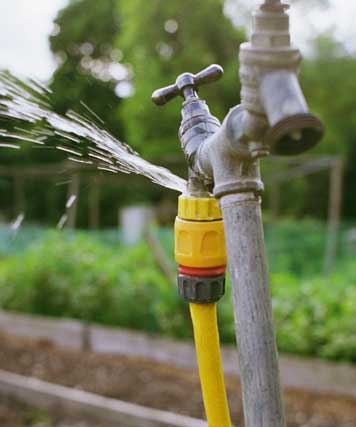We have stumbled on this post on Leaking water lines below on the net and thought it made perfect sense to share it with you here.

The minute you locate a leakage, calling your plumber for repair work is the best remedy. Nevertheless, some small water leakages may not show up. If you can not find it with your naked eyes, here are some hacks that help.
Early discovery of dripping water lines can mitigate a potential catastrophe. Apart from saving you money, it will minimize the aggravation and irritation.
Inspect Water Intake
Analyze your water expenses as well as track your water usage. As the one paying it, you need to discover if there are any type of discrepancies. If you spot sudden changes, regardless of your usage being the same, it implies that you have leaks in your plumbing system. Remember, your water bill ought to drop under the very same array each month. A sudden spike in your bill indicates a fast-moving leak.
A stable boost every month, even with the exact same routines, reveals you have a sluggish leakage that's also gradually intensifying. Call a plumber to thoroughly check your home, particularly if you feel a cozy area on your floor with piping below.
Examine the scenario and also inspect
Home owners must make it a habit to check under the sink counters as well as even inside cupboards for any type of bad odor or mold and mildew development. These two red flags suggest a leak so prompt interest is called for. Doing routine assessments, also bi-annually, can save you from a major issue.
Analyze the Water Meter
Every house has a water meter. Inspecting it is a guaranteed manner in which aids you uncover leaks. For beginners, turn off all the water resources. Make sure no one will purge, utilize the tap, shower, run the washing maker or dishwasher. From there, go to the meter as well as watch if it will certainly change. Because no person is using it, there ought to be no movements. If it relocates, that indicates a fast-moving leakage. Likewise, if you detect no changes, wait an hour or 2 and examine back once again. This indicates you might have a slow-moving leakage that might even be underground.
Asses Exterior Lines
Do not fail to remember to check your outside water lines also. Ought to water leak out of the link, you have a loose rubber gasket. One small leak can squander heaps of water and also surge your water bill.
Do a Food Coloring Examination
30% comes from toilets when it comes to water consumption. Examination to see if they are running properly. Decrease specks of food color in the storage tank as well as wait 10 mins. There's a leakage in between the tank and dish if the color in some way infiltrates your dish during that time without flushing.
Check for discolorations as well as weakening as most appliances and pipelines have a life span. If you suspect dripping water lines in your plumbing system, do not wait for it to escalate.
The minute you find a leak, calling your plumber for repairs is the ideal service. Some small water leakages may not be visible. Examining it is a proven means that aids you find leaks. One tiny leakage can lose tons of water as well as surge your water costs.
If you believe leaking water lines in your plumbing system, don't wait for it to rise.
WARNING SIGNS OF WATER LEAKAGE BEHIND THE WALL
PERSISTENT MUSTY ODORS
As water slowly drips from a leaky pipe inside the wall, flooring and sheetrock stay damp and develop an odor similar to wet cardboard. It generates a musty smell that can help you find hidden leaks.
MOLD IN UNUSUAL AREAS
Mold usually grows in wet areas like kitchens, baths and laundry rooms. If you spot the stuff on walls or baseboards in other rooms of the house, it’s a good indicator of undetected water leaks.
STAINS THAT GROW
When mold thrives around a leaky pipe, it sometimes takes hold on the inside surface of the affected wall. A growing stain on otherwise clean sheetrock is often your sign of a hidden plumbing problem.
PEELING OR BUBBLING WALLPAPER / PAINT
This clue is easy to miss in rooms that don’t get much use. When you see wallpaper separating along seams or paint bubbling or flaking off the wall, blame sheetrock that stays wet because of an undetected leak.
BUCKLED CEILINGS AND STAINED FLOORS
If ceilings or floors in bathrooms, kitchens or laundry areas develop structural problems, don’t rule out constant damp inside the walls. Wet sheetrock can affect adjacent framing, flooring and ceilings.
https://www.servicemasterbyzaba.com/blog/how-to-detect-water-leakage-in-walls/

As a reader on Leaking water lines, I think sharing that chunk was essential. Make sure you take the opportunity to distribute this blog entry if you enjoyed it. Thank-you for going through it.